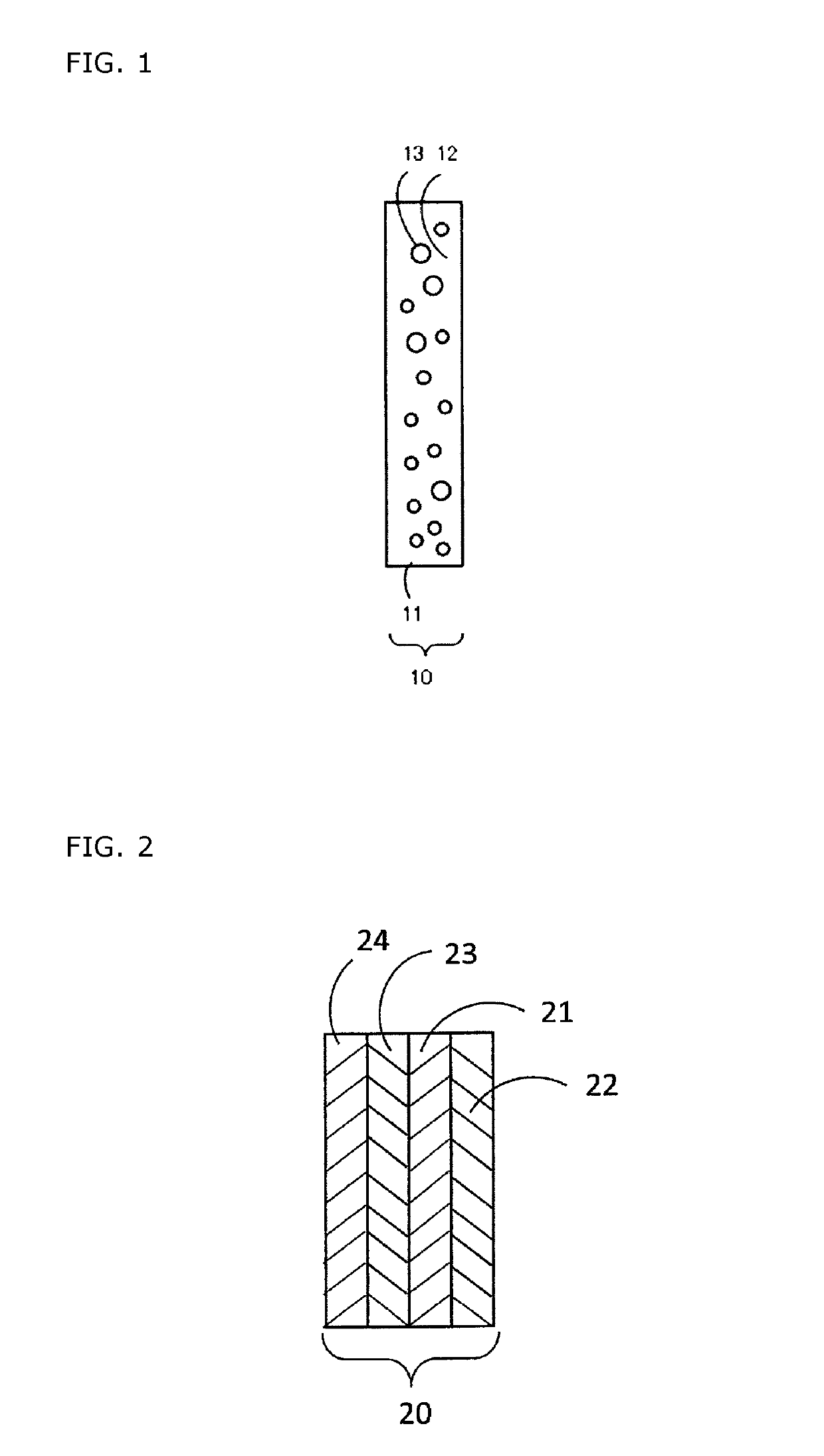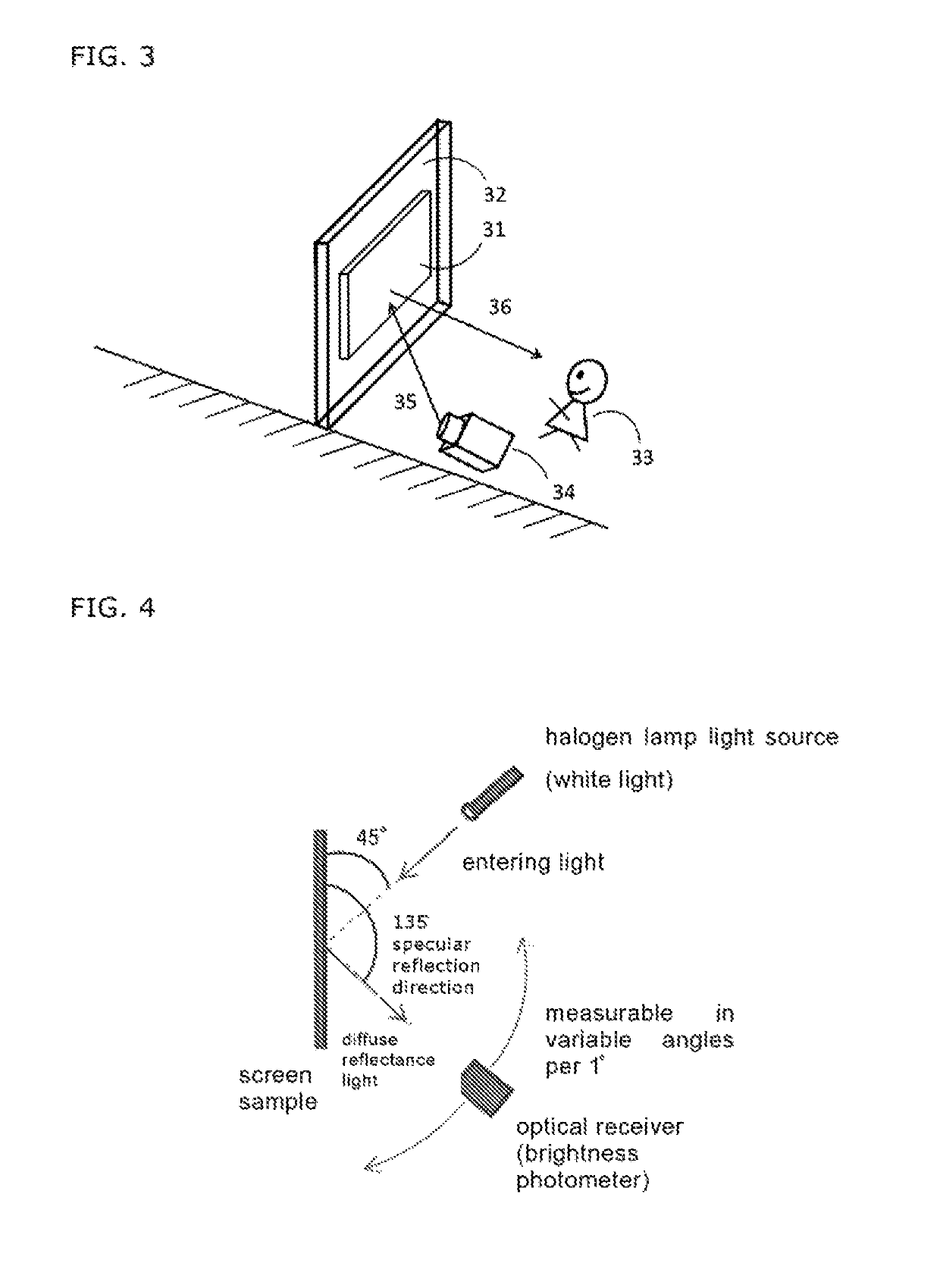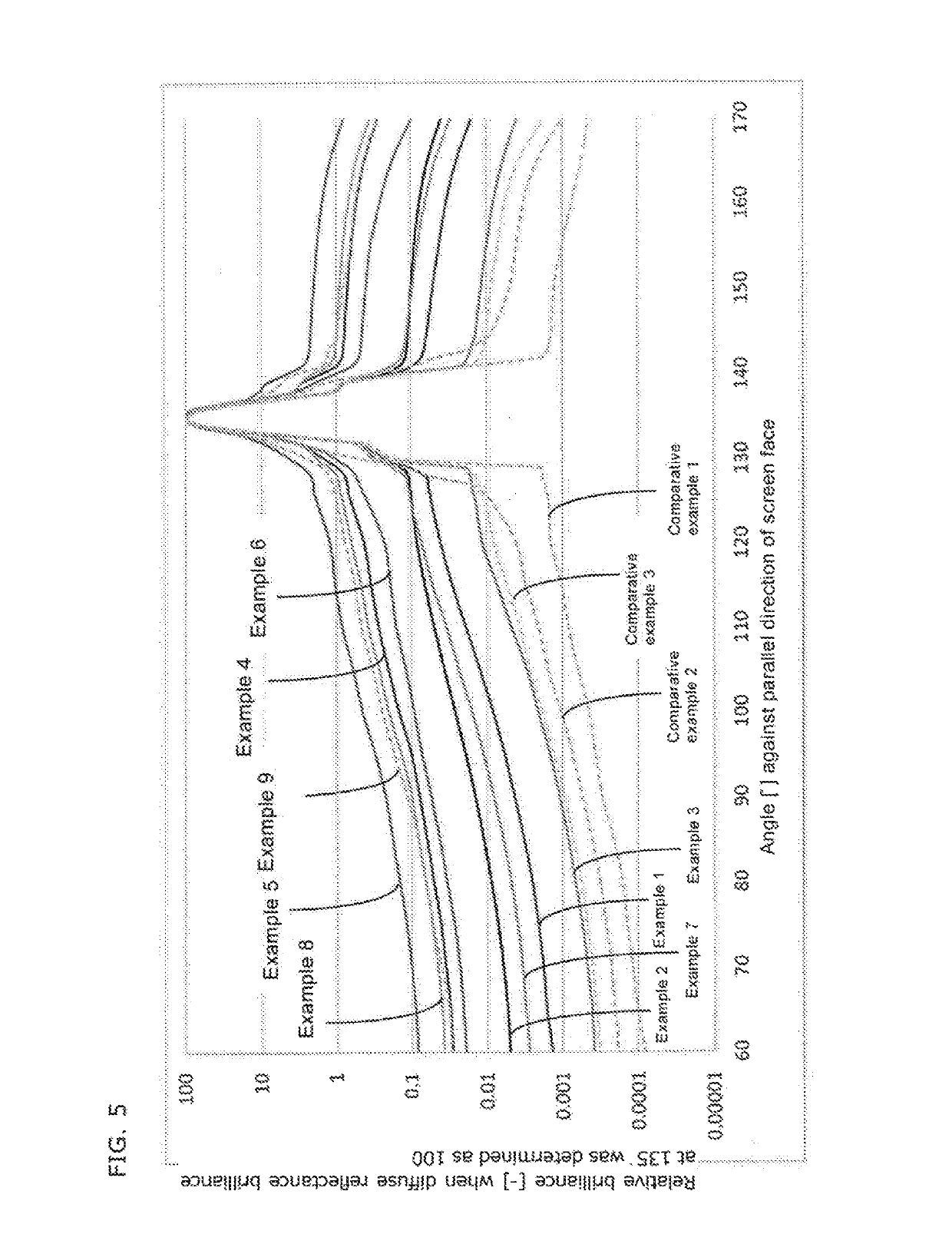Reflective transparent screen and image projection device comprising same
a technology of transparent screen and image, applied in the direction of optical elements, television systems, instruments, etc., can solve the problem that the projector screen cannot be applied to the transparent partition
- Summary
- Abstract
- Description
- Claims
- Application Information
AI Technical Summary
Benefits of technology
Problems solved by technology
Method used
Image
Examples
example 1
[0112]A polyethylene terephthalate (PET) pellet (manufactured by Bell Polyester Products, Inc., brand name: IFG8L) and 0.012% by mass of flake form aluminum microparticles A (light reflective microparticles, primary particles with average diameter: 1 μm, aspect ratio: 300, regular reflectance: 62.8%) based on the PET pellet were mixed for 30 minutes in a tumbler mixer to obtain a PET pellet which flake form aluminum was attached to its surface homogeneously. The obtained pellet was supplied to a hopper of a twin-screw kneading extruder with a strand die and a masterbatch in which flake form aluminum are kneaded in was obtained at an extrusion temperature of 250° C. The obtained masterbatch and the PET pellet (brand name: IFG8L) were mixed homogeneously in a proportion of 1:2, introduced into a hopper of a single-screw extruder with a T die, and extruded at extrusion temperature of 250° C. to produce a film in a thickness of 75 μm. Since the flake form aluminum microparticles concent...
example 2
[0115]A transparent screen was obtained by attaching a commercially available low reflective film (Realook 2702 UV / NP-50, manufactured by NOF Corporation) to the film (light diffusion layer) side of the transparent screen obtained in Example 1.
[0116]The obtained transparent screen had a total light transmittance of 90.2%, a parallel beam transmittance of 85.9%, a luminous reflectance Y of 2.5%, and an image clarity of 96%.
[0117]When the diffuse reflectance light brilliance profile of the transparent screen was measured with a goniophotometer, the relative brilliance of the diffuse reflectance light at 60 degrees was 0.005, at 90 degrees was 0.014, and at 120 degrees was 0.083, when light was entered at an angle of 45 degrees against the parallel direction of the screen face and the brilliance of diffuse reflectance light in the specular reflection direction (135 degrees) was determined as 100. This diffuse reflectance light brilliance profile is shown in FIG. 5. When an image was pr...
example 3
[0118]A PET pellet (manufactured by Bell Polyester Products, Inc., brand name: IFG8L) and 0.005% by mass of flake form aluminum microparticles A based on the PET pellet were mixed for 30 minutes in a tumbler mixer to obtain a PET pellet which flake form aluminum was attached to its surface homogeneously. The obtained pellet was supplied to a hopper of a twin-screw kneading extruder with a strand die, extruded at extrusion temperature of 250° C. to obtain a masterbatch in which flake form aluminum are kneaded in. The obtained masterbatch and the PET pellet (brand name: IFG8L) were mixed homogeneously in a proportion of 1:4, introduced into a hopper of a single-screw extruder with a T die, and extruded at extrusion temperature of 250° C. to produce a film in a thickness of 50 μm. Since the flake form aluminum microparticles concentration in the film was 0.001% by mass, the film (light diffusion layer) thickness t (μm) and the concentration c (% by mass) of the flake form aluminum micr...
PUM
 Login to View More
Login to View More Abstract
Description
Claims
Application Information
 Login to View More
Login to View More - R&D
- Intellectual Property
- Life Sciences
- Materials
- Tech Scout
- Unparalleled Data Quality
- Higher Quality Content
- 60% Fewer Hallucinations
Browse by: Latest US Patents, China's latest patents, Technical Efficacy Thesaurus, Application Domain, Technology Topic, Popular Technical Reports.
© 2025 PatSnap. All rights reserved.Legal|Privacy policy|Modern Slavery Act Transparency Statement|Sitemap|About US| Contact US: help@patsnap.com



